The accelerating depletion rates of our natural resources has been pushing us towards a state of chaos; a continual reminder that we must switch to alternate resources to keep civilization going. The most popular alternate energy source, if not solar, is nuclear. Nuclear energy is the result of years of experiments. It is all set to take the place of the next big alternate resource we can tap into and it also produces less waste.
There are many doubts if nuclear reactors are safe to use or would they lead to disturbances in the existing order of the world. At this juncture let’s try understanding Small Nuclear Reactors better and how they are different from the larger nuclear reactors that pose a greater threat to us. What do these miniature nuclear reactors have in store for us if they go mainstream!
Nuclear Reactor History
The very first time we generated electricity from nuclear energy was on December 20, 1951 in the high deserts of south eastern Idaho. The estimated electrical output from the nuclear energy was 45 kW. Since then, the reactors have evolved in their size and the electrical output, peaking at about 1,400 MW now. Half a century after the generation of first nuclear energy, reactors with lower electrical outputs seem to be trending again.
According to a report prepared by Oak Ridge National Laboratory, the long-term goal of nuclear power is to “develop an economical, safe, environmentally acceptable, unlimited supply of energy for society.”
Choosing Small Nuclear Reactors over the larger ones
Smaller nuclear reactors are economic
One of the most important factors that differentiate the smaller nuclear reactors from the larger ones is the lower investment involved. This economic quality of the small nuclear reactors is an attractive offer for the poor, energy-starved countries; small, growing communities where there is no need for a full-scale plant.
Factory built
The factory-built feature is also important because a factory-built nuclear reactor is more efficient than an on-site construction. It’s going to consume lesser time to build as compared to the larger nuclear reactors that typically require about ten to fifteen years of construction before they’re commissioned. Small Modular Reactors are built and delivered to the site. After the end of their service life, they return to the factory for dismantling. This solves the major problem of disposing them!
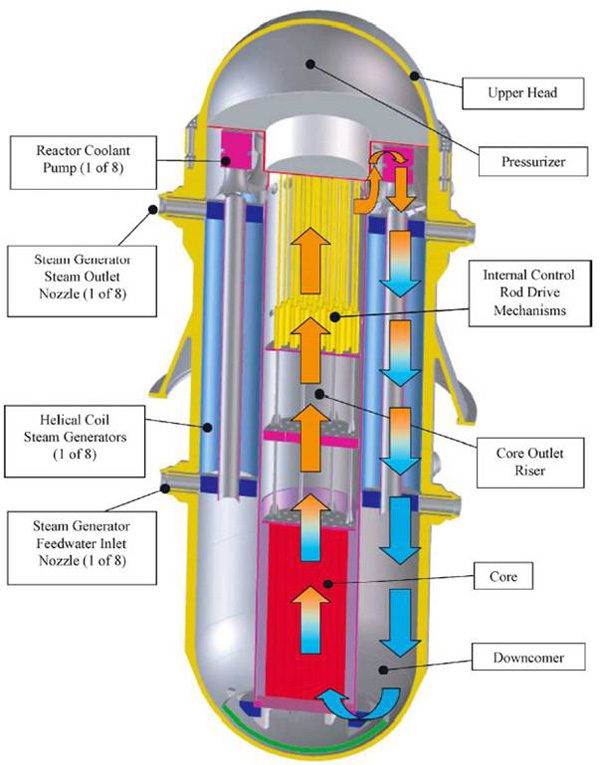
Flexibility of design
Small Modular Reactors (SMR) / Small Nuclear Reactors allow for much greater design flexibility – which is not present in the Conventional Reactors. Conventional reactors can be constructed only near rivers or coastlines as they are usually cooled by water – a great deal of water! Whereas SMRs can be cooled by air, gas, low-melting point metals or salt. This makes this location agnostic.
Greater Safety
The cooling system of the SMRs is often passive. It depends lesser on the pumps and primarily on the natural circulation of the cooling medium that takes place within the containment flask of the reactor. This is how SMRs can improve safety. Since modular reactors are smaller than conventional ones, they contain less fuel and are easier to cool. Thus, it reduces the chances of any mishap. If any accident does occur, there is less radioactive material that can end up being released into the environment, making it easier to design emergency systems.
More Efficient
SMRs when combined with other energy sources produce higher efficiencies and a number of energy end-products while increasing grid stability and security.
Types of Small Modular Reactors
Here are a few major types of nuclear reactors from the many existing ones out there.
Light-water reactors
A light water reactor is simply a conventional reactor with a restricted size. Just like conventional reactors, it uses water as a coolant and a neutron moderator. We’ve made impressive technological advancements in light-water reactors – thanks to many engineers with decades of of experience with light-water SMR as these are used on submarines and icebreakers.
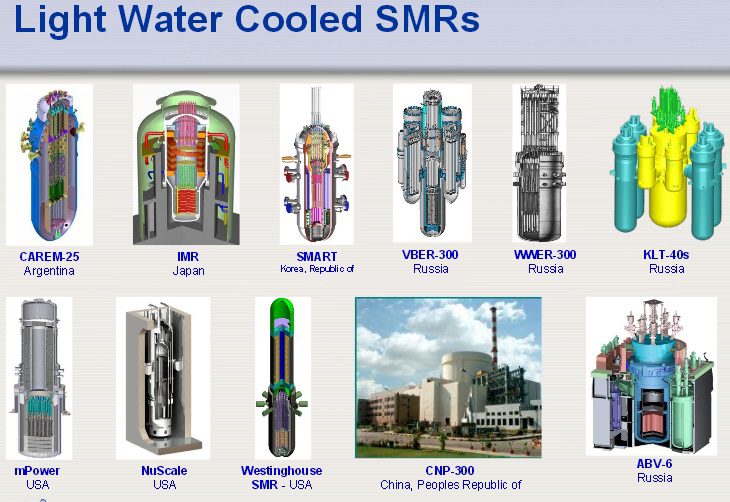
Westinghouse SMR
The Westinghouse SMR is a miniature version of AP1000 reactor. While the AP1000 produces 1,154 megawatts and requires 50 acres for its setup, the Westinghouse SMR produces 225 megawatts and needs only 15 acres. Westinghouse SMR can go without needing any operator intervention to prevent damage for a period of 7 days.
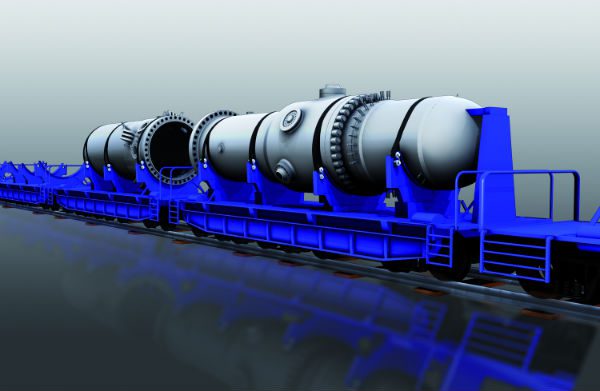
mPower
mPower is based on an US Navy reactor design backed by Babcock and Wilcox. It produces 160 megawatts. The system’s condensers are cooled by water, but can be air-cooled as well, but there would be a lower power output. The reactor has a service life of 60 years and stores its spent fuel on site for the duration.
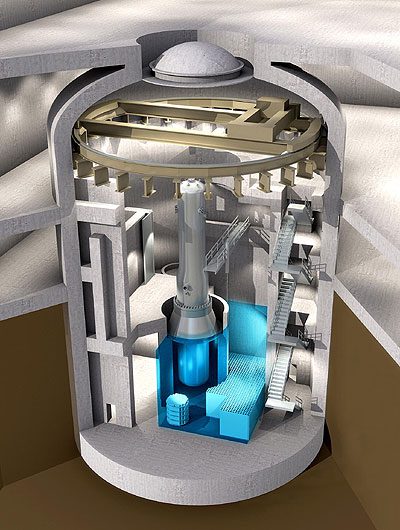 NuScale
NuScale
NuScale seems small with its output of just 45 megawatts. These are placed in an underground pool of water and the units are cooled by natural circulation. There are no pumps and the only moving parts are those used to run the control rods.
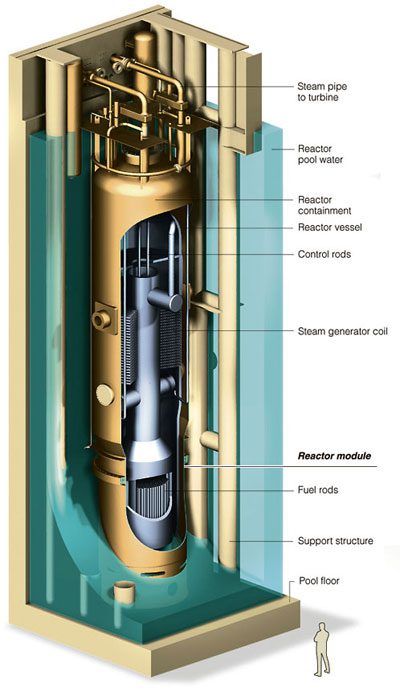
Molten salt reactors
In this type of SMR, the coolant and the fuel are the same. The coolant is a mixture of lithium and beryllium fluoride salts. Enriched uranium, thorium or U-233 dissolve in it. This molten salt solution passes comparatively at low pressure and a high temperature of 1,300 degrees F. As the fuel burns, the waste is removed from the solution.
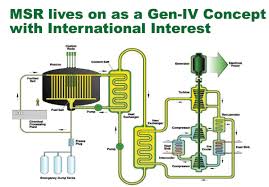
What if they go main stream?
Once Small Modular Reactors go mainstream, we’d be staring at a blinding number of new possibilities in every industrial field. As energy outputs from SMRs continue to rise, expect power deficiency across the globe (even developing countries) to vanish. With nuclear energy, efficiency was never an issue anyway.
And of course, the obvious, and most important results – the use of SMR would reduce our dependence on natural resources and fossil fuels that continue to feel like a doomsday clock.
Of course, not everything is rosy. With nuclear power, comes nuclear responsibility. And our species isn’t a very responsible lot. Many nations cannot be trusted to use nuclear power for peaceful purposes only. Countries facing internal strife will also have the additional responsibility of preventing nuclear technology from falling into the hands of terrorists and other negative entities.


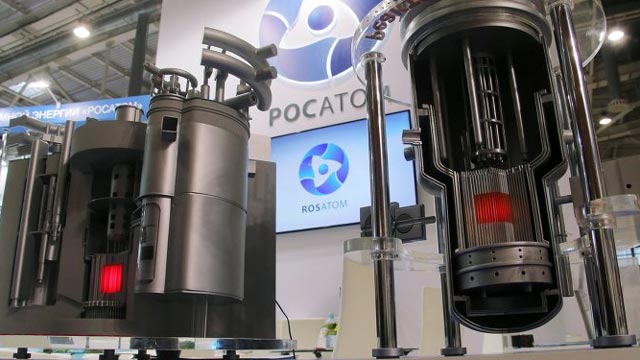
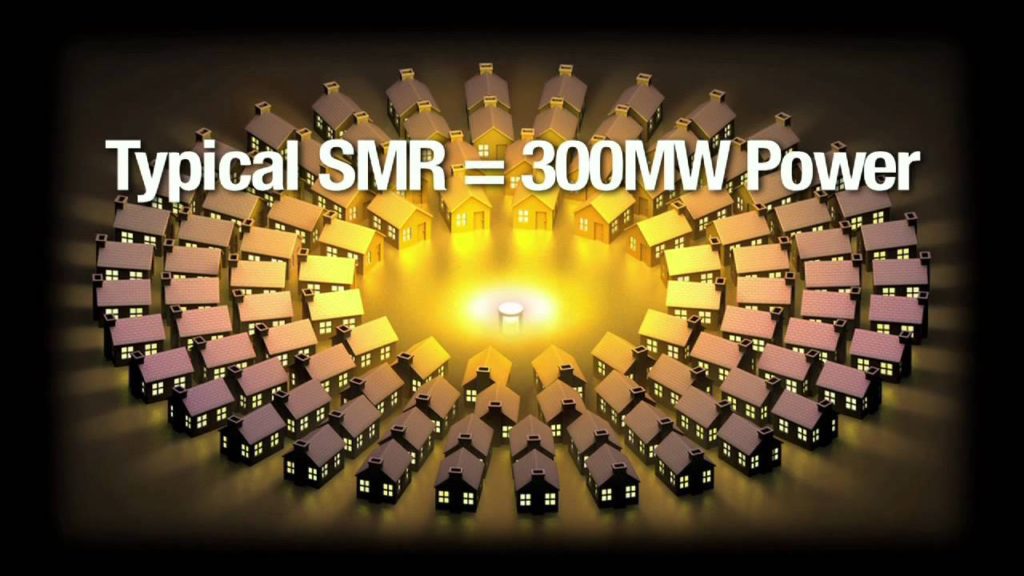
No Comments
I’ve read articles before talking about a specific energy solution (nuclear, solar, hidro, geo, etc) and they all fail to mention some basic issues such as actual cost (construction, maintenance, fuel prices and how much is required), additional requirements such as water and coolants, dependence on other countries on fuel source (refined uranium), location requirements such as area and safe distance from communities, used fuel handling and costs.
Other things I really think should always be mention is distance from source to consumer since transmitting lines and substations cost a lot of money to build and maintain. For example, the small nuclear reactors, if safe enough could be located near a city and would not require hundreds of miles of high voltage lines and step-down substations, it also allows grid independence avoiding state wise blackouts in case of source or distribution issues.